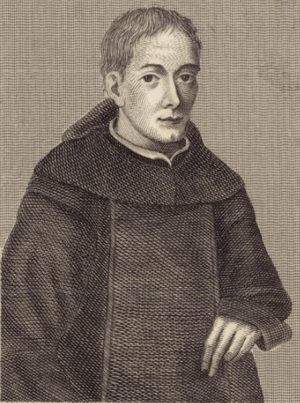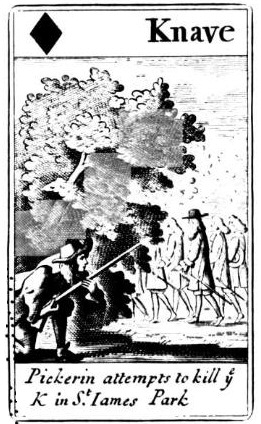Thomas Pickering (martyr) facts for kids
Quick facts for kids BlessedThomas Pickering OSB |
|
|---|---|
 |
|
| Martyr | |
| Born | c. 1621 Westmorland, England |
| Died | 9 May 1679 (aged 57) Tyburn, London, England |
| Venerated in | Roman Catholic Church |
| Beatified | 15 December 1929 by Pope Pius XI |
| Feast | 9 May |
Thomas Pickering (born around 1621 – died May 9, 1679) was a kind and charitable Benedictine monk. He lived in England during a time when being Catholic was difficult. He became a martyr because of false accusations made by a man named Titus Oates. Oates claimed Pickering was part of a plan to kill King Charles II.
A Monk's Life
Thomas Pickering was born in Westmorland, England. He joined the Benedictine monks at the Abbey of St. Gregory the Great. This abbey was located in Douai, which is now part of France. He officially became a monk in 1660.
In 1665, Thomas Pickering was sent to London. His job was to be a steward for the Benedictine monks. These monks worked at the chapel of Queen Catherine of Braganza. She was the Catholic wife of King Charles II.
Pickering became known to both the Queen and the King. In 1675, Parliament wanted all Benedictines to leave England. But Pickering was allowed to stay. This was probably because he was not a priest.
The Popish Plot
In 1678, a man named Titus Oates made up a big lie. He claimed there was a Catholic plan to kill the King. This false story became known as the Popish Plot. Thomas Pickering was accused of being part of this made-up conspiracy.
At his trial in December 1678, there was no real proof against Pickering. Only Oates's word was used as evidence. Pickering's housekeeper, Ellen Rigby, later said that Oates had only met Pickering once. She said Oates had been begging for money. She also said Oates had a personal dislike for Pickering.
Even the Queen believed Pickering was innocent. She said he was no danger to the royal family. But the jury was pressured by the judge, William Scroggs. The judge strongly believed in the Popish Plot. So, Pickering was found guilty. He was sentenced to death along with two other men, William Ireland and John Grove.
His Execution
King Charles II knew Pickering was innocent. He did not want to execute innocent men. But the public was very angry and demanded the deaths of Oates's victims. Twice, the prisoners were told to prepare for execution, but then they were saved at the last minute.
The King finally ordered the execution of Ireland and Grove. He hoped this would calm the public. He wanted to save Pickering. However, on April 26, 1679, the House of Commons asked for Pickering's execution.
The King gave in to the pressure. On May 9, 1679, Thomas Pickering was executed in London. He was known as a very kind and charitable man.
Thomas Pickering was one of 107 martyrs. They were recognized as "blessed" by Pope Pius XI in 1929.


